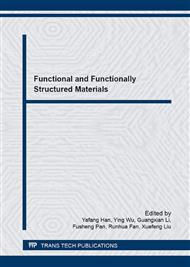p.89
p.94
p.99
p.111
p.120
p.125
p.132
p.140
p.148
Fabrication of Copolymer PMMA-BMA Oil Absorption Resin
Abstract:
PMMA-BMA oil absorption resin was prepared by dispersion polymerization. Oil absorption properties were adjusted by changing the monomer ratio, content of initiator and crosslinking agent. Absorption capacity of porous material, which PMMA-BMA oil absorption resin adhesive in the polyurethane surface, was also investigated. The experimental results show that the best oil absorption ratio of PMMA-BMA copolymer resin was obtained when the MMA/BMA mole ratio was1:1.5, and the initiator and crosslinking agent was 0.4% and 0.35% of the copolymer resin respectively. The porous material was fabricated using the porous polyurethane sponge dipped in the liquid copolymer resin. The porous material resin can be reused since its low oil retention rate, and it can be used as absorption container of oil vapor.
Info:
Periodical:
Pages:
120-124
Citation:
Online since:
March 2016
Authors:
Keywords:
Price:
Сopyright:
© 2016 Trans Tech Publications Ltd. All Rights Reserved
Share:
Citation:


